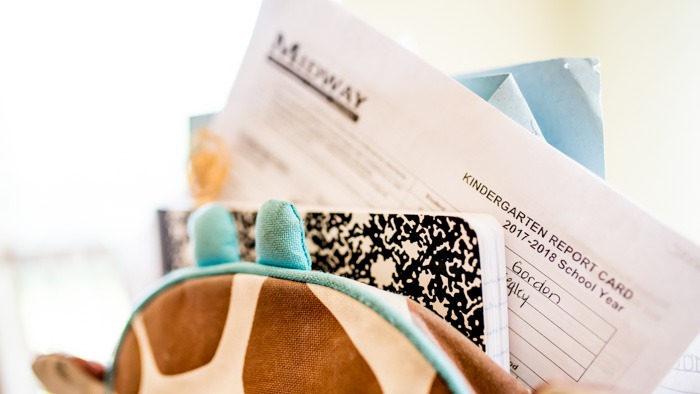Making sense of your child’s report card: an interview with US literacy expert, Sheri Nelson
by Laura Gordon || 15 June 2018

For many of our families in the US, it’s report card season. If you grew up with the traditional report card, which listed your grades as A, B, C, D, or F, then you might be perplexed by the new grading systems.
To help give you a better idea of just what that report card means, I spoke with veteran teacher and literacy specialist, Sheri Nelson. Nelson taught in Missouri public schools for ten years, and now she teachers future Elementary school teachers at Baylor University in Waco, Texas. Here, she explains the way that report cards are currently used in the US, and she gives some additional explanation of the Instructional Reading Levels that some schools include on report cards.
Below, we provide a transcript of our questions for Nelson, and her answers.
- If schools aren’t using traditional grades, like A, B, C, D, or F, then what systems are they using to grade children?
As far as report cards in general, I believe most schools are currently using standards-based grading. This means the state/district/school has identified a set of standards they expect students at each particular grade level to know or be able to do by the end of the school year. So, if used properly, you would expect most students to be “progressing” throughout the school year and have “mastered” the standards by the end of the year. That means students wouldn’t be bouncing back and forth between “progressing” and “mastered” throughout the year (if assessed and graded appropriately). The standard doesn’t change (i.e.: Students can count to 10. Either they are progressing toward that or they can do it consistently.)
- Some schools include information about a child’s Instructional Reading Level on the report card. What are these reading levels and what do they mean?
When it comes to reading levels, there are a plethora of leveling system designed for various purposes. The most commonly used by teachers currently is probably the Fountas and Pinnell text level gradient, which designates levels using a letter system A-Z. Fountas and Pinnell developed this system as a teacher tool which indicates the continuum of reading behaviors as text becomes progressively more complex.
Another commonly used reading level system is AR or Accelerated Reader developed by Renaissance Learning. They have created their own leveling assessment called the Renaissance Star Reading, which is administered on a computer. Students would be assigned a reading range (i.e.: 3.1-4.1) after completing the assessment. This leveling system is a numbered system based on grade level. i.e.: A level 2.3 would be equivalent to 2nd grade, 3rd month. Again, this leveling system was created as a tool to monitor and motivate independent reading, not to report reading abilities to parents.
The reading levels are designed to be used to level books in a school or classroom library. Fountas and Pinnell repeatedly state their leveling system is NOT meant to be used to report student progress to parents or students. However, these levels have been known to appear on report cards.
- What should parents be looking for on their child’s report card?
First, I would suggest looking at the standards on the report card and note any areas a child has not mastered by the end of the year. This would be an area to focus on. If unsure, ask your child’s teacher what the specific standard(s) mean. Any teacher worth her salt will be able to expand on each of the areas reported on the report card and give detailed information about what the student is expected to know/do, as well as, ideas for you to work on at home/over the summer. When in doubt, ask the teacher, he/she is the expert and should be happy to partner with parents to benefit the child!
- How should parents interpret the Instructional Reading Level information on the report card?
As far as the specific reading level on the report card is concerned, I would expect each child to have made progress from the beginning to the end of the school year. The amount of progress is going to depend on the grade level as well as where the child began the year. You can easily Google the F&P levels to see where they expect the average student to be reading at each grade level, but please remember, not only is this only one small piece of information about a child, it is not designed to be used in this way. My better suggestion is to ask your teacher, “Is this where my child should be reading at this point in the school year?”
- Finally, what advice do you have for parents to help them support their children as readers?
Students should never be bound to reading books solely at a certain level, it is simply a guideline for teachers to follow for direct instruction (guided reading). If [you are] concerned about a child’s reading ability, my recommendation to parents first and foremost is to read with your child as much as you are able. Take them to the library often to get new books and encourage reading by setting aside time each day. Reading to your child, having your child read to you, or read independently are all extremely beneficial.
